Wood is a rather popular and environmentally friendly material, so wooden ...
|
|
And you knew that the installation of a stone, slate or fence made of metal profile between ... |
Когда планируется капитальный ремонт жилого помещения, без выравнивания пола не... |
How to choose a roof insulation?

Comfortable accommodation in the house entirely depends on the quality of the materials used in its construction. When choosing these, special attention should be paid to the materials for the roof.
Whatever its upper coating, whether it be a metal tile, bitumen tile or ceramic - it is important to take care of the thermal insulation of the roof. To do this, you need to know the problem of the choice of insulation for the roof. Modern foreign and domestic manufacturers offer a fairly wide range of these products. Comfortable accommodation in the house largely depends on the correct choice of material for roof insulation, whether it will be comfortable and warm enough in the cold season.
- Choosing a roof insulation correctly
- The most common errors when warming the roof:
- Roof insulation materials
- Mineral wool
- Knauf roof insulation
- Warming for the roof of Ursa
- Devil for the roof isover
- Foam polystyrene
- Poliuretan foam
- Cellulose or Ecowata
- Foam concrete
- Foamed glass
- Keramzit
Choosing a roof insulation correctly
So, how to choose a roof insulation correctly? What should you pay attention to first? First of all, the type of insulation under the roof should be selected depending on the type of roof.
To date, the following main types of roofs are distinguished:
- single -sided;
- gable;
- tent;
- flat;
- hot (gable, four -scatter)
This, of course, is far from complete classification. The type of roof is determined by the features of the geometric shape and roof material. The most common and practical design is rightfully considered a gable roof. On it, moisture does not linger, but flows freely on inclined planes.
What should you pay attention to in the process of choosing a material for roof insulation?
When resolving the issue of what insulation is better for the roof of a private house, garage, baths, etc., you should first understand the criteria for choosing. These include:
- The service life of the material. It should be long. In this case, the material should not lose its properties during operation.
- Formalness. The reliability of a particular material for warming the roof depends on its ability to maintain hermetic parameters.
- Specific gravity. The material should not be too light or heavy, therefore, you need to pay attention to the density.
- Frost resistance. The insulation should not lose its properties at the changes in air temperature.
- Soundproofing. It is necessary to pay attention to the soundproofing indicators of the material, especially when it comes to the acquisition of insulation for a pitched roof made of noisy material.
- Environmental friendliness. The material should be environmentally friendly, not toxic.
No less important role is played by the thickness of the heater for the roof. When calculating this parameter, it is necessary to take into account the indicator of the thermal resistance of the structure and the thermal conductivity of the material, the resulting coefficient depends on the type of roof and climatic features of the region.
It is quite possible to cope with the roof insulation work independently, without involving specialists, the main thing is to avoid some mistakes.
First of all, what should be the best roof insulation? Light, non -combustible, safe and high -quality, suitable for the type of roof design.
The most common errors when warming the roof
- Savings on quality. In this case, the rule applies: the stingy pays twice. Do not try to save as much as possible. It is best to purchase materials from well -known manufacturers who have positively proven themselves. The construction market offers a fairly wide range of heater for the roof, the prices for which are quite acceptable.
- The material should be enough, otherwise the layer will be too thin: it simply will not perform its functions.
- The material must be chosen carefully, especially when it comes to a heater for a flat roof. It is best to use mineral basalt wool of high rigidity or foam concrete for these purposes. At the same time, it is also important to be guided by the design documentation, the design features of the roof and the conditions of its operation (attic, attic). If, as a consequence, the surface of the roof is operated, it is necessary to put the concrete screed over the insulation.
- Particular attention should be paid to hydro- and vapor barrier. It depends on the number of joints and seams of the insulation how qualitatively the material will prevent the outflow of heat and the penetration of cold.
- You can not neglect the gaps between the layers of the roofing cake, especially when it comes to insulation for a soft roof. During the installation of this, it is necessary to take into account the circulation of air flows between the layers.
- When laying the insulating layer between the rafters, it is important to carefully measure the insulation in order to avoid the formation of cracks.
Roof insulation materials
To date, the most common and popular materials for roof insulation are as follows:
- mineral cotton wool (KNAUF, URSA, Izover);
- polystyrene foam;
- polyurethane foam;
- cellulose insulation;
- foam concrete;
- foamed glass;
- keramzit.
Each of these materials has its own positive and negative points.
Mineral wool
Mineral wool is an ideal material for high -quality roof insulation, it does not burn and absolutely does not absorb moisture. Since the properties of the material have long been recognized and it is considered the best for the roof insulation, it is also represented by several authoritative manufacturers on the market.
Knauf roof insulation
The material is available in rolls and in plates, intended for insulation of walls and all types of roof. Knauf insulation occupies a leading position in its segment in the construction markets of Europe and the CIS countries. This universal material for thermal insulation is based on fiberglass according to Ecose Technology technology and meets all the generally accepted European quality standards. This is an environmentally friendly insulation with high thermal insulation indicators with a small share.
Warming for the roof of Ursa
The scope of this material is quite wide, it has not only excellent thermal insulation properties, but also soundproofing. Therefore, it is suitable for insulation of a noisy roof, which is a metal tile. Among other things, due to the elasticity of fiberglass during installation work, it is possible to achieve the perfect fit of the material to the surface, exclude possible gaps, thereby ensuring the maximum possible sound and thermal insulation of the room. The density of the insulation for the roof of the Urs is quite small, thanks to this it is possible to cut material with high accuracy with ordinary scissors during installation. Due to the unique structure, properties and form, Ursa insulation has the ability to absorb most of the different sound waves produced by external noise sources, which guarantees the provision of excellent soundproofing of the room. Among other things, the use of this material when warming a roof of any type will significantly minimize heating costs.
Devil for the roof isover
Universal thermal insulation material is produced in rolls and mats. Equally perfect for warming the pitched and horizontal surfaces. It is distinguished by excellent performance and a long service life (at least 25 years). Light sound and heat-insulating plates or fiberglass rolls are made according to the unique tel fiber technology. The material is not a fuel, but this is an important indicator that is taken into account when installing a safe and warm roof. The design of the roof, regardless of its type, provides for the presence of ventilated gaps, which, in the event of a fire of the building, contribute to the rapid spread of fire. That is why to compile a roofing pie, you need to use non -combustible materials.
To insulate the roof with mineral wool, the frame is installed, it is covered with waterproofing with overlap, fixing it with a stapler. Polyethylene or a membrane film can act as waterproofing (vapor barrier). Between the bars of the frame, mineral wool slabs are attached. It is important to observe the gap between the roof and the insulation so that the condensate is not going to, but quickly evaporates. The thickness of the insulation should be 150-180 mm for the southern regions and 200-250 mm for the middle strip.
Mineral -willed slabs covered with a foil layer are very convenient for installation. In this case, an additional vapor barrier is not used, and the plates are fixed with foil to the room.
Foam polystyrene
A separate place in the variety of materials for warming the roof is currently occupied by polystyrene or polystyrene foam. It has excellent thermal insulation properties, while perfectly absorbs sounds. But this insulation is not recommended for isolation and insulation of a soft flat roof due to its combustibility and vapor permeability. When using extruded polystyrene foam, it is important to provide good ventilation of the room.
Polistyle foam is fixed from the inside of the roof. Extruded polystyrene foam plates in one layer are laid directly on waterproofing. In the process of installation, it is important to monitor the density of the surroundings of the edges. The joints of the plates should be filled with mounting foam, over which reinforced tape is glued.
Poliuretan foam

This material has excellent performance: it does not burn, has excellent thermal insulation properties, is easily applied directly to the roofing pie even in hard -to -reach places. In this case, in the process of applying it, seams and gaps are not formed. To date, polyurethane foam is considered the most economical and effective material for roof insulation, regardless of its type. It is applied (sprayed) on the inner layer of the roof from special equipment.
From how high -quality and competently the roof insulation work will be done, how competently the choice of material was made, silence, warmth and comfort in your house are entirely dependent.
Cellulose or Ecowata
This insulation is made from waste paper. It would seem, can he meet such a requirement as fire safety? Maybe! In the manufacture of ecovatas, antipypees are added to the composition, which make the material resistant to fire. Since cellulose is exposed to microorganisms, it is impregnated with antiseptics to increase biustrity. The result is a light, cheap, environmentally friendly, perfectly performing the functions of heat and sound insulation material.
Its most common brands are the Canadian-American Ecowool, the Russian-Kazakh Ecowata and the Ukrainian Uniz. Another advantage of the material is blown out of the installation and allows you to tightly close all the cracks, avoiding the seams. At the same time, it is difficult to perform such a procedure on your own: you will need to attract specialists.
Foam concrete
One of the newest materials for insulation of a flat roof foam concrete. It includes concrete, cement, sand and steam -former. Let you not be misleaded by the presence of concrete in the name of the word. In terms of durability and monolithic, it is really concrete, but by weight foam. Therefore, this material allows you to insulate the roof, and does not create a load on the supporting structures. Fire safety, non -toxicity, vapor permeability, durability of foam concrete has all the qualities necessary for roof insulation. It perfectly retains heat and provides complete tightness.
Work on roof insulation with foam concrete is carried out by specialists using a mobile installation. The thickness of the layer can fluctuate from 30 to 150 mm.
Foamed glass
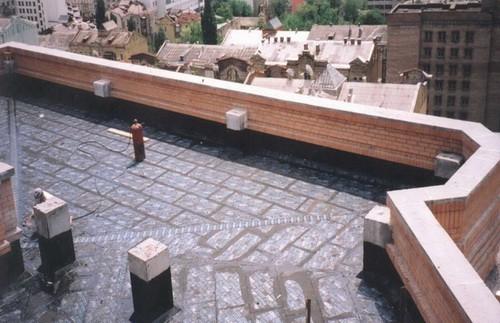
The material produced by foaming the remains of glass production with carbon is durable, resistant to deformation, retains its thermal insulation properties, is not exposed to microorganisms and rodents, is not afraid of water and steam, not fuel.
Excellent qualitative characteristics of foamed glass allow you to use it as a heater for all types of roofs. The surface of wood, metal, concrete will be reliably protected by heat -insulating slabs. No matter what material the roof is made, in combination with foamed glass, it will reliably hold the heat in the house. Such a heater will make a soft roof more elastic. For operated roofs, foamed glass will become a heater, a security security and an aligning layer at the same time.
The foam glass still has one drawback. This material absorbs poorly, so for its installation it is necessary to use polymer -cement glue to ensure good adhesion.
Keramzit

This is one of the well -established bulk materials for insulation. It is poured on the outside of the roof or on the floor slab. Then they are compacted and either covered with roofing material or fixed with a concrete screed. This provides not only thermal insulation, but also the strength of the entire structure. They do this in cases where supporting ceilings allow.
Silence, warmth and comfort in your house, are completely dependent on how qualitatively and competently work on roof insulation will be done correctly, the choice of material.

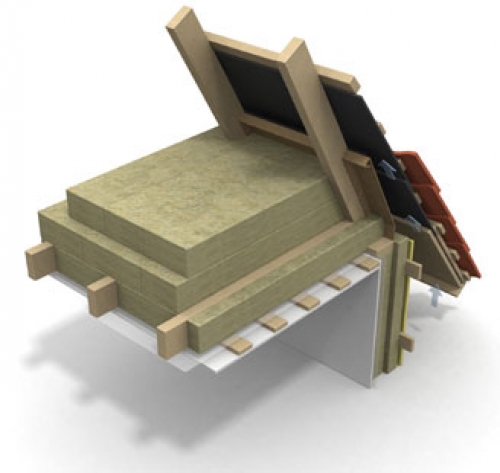
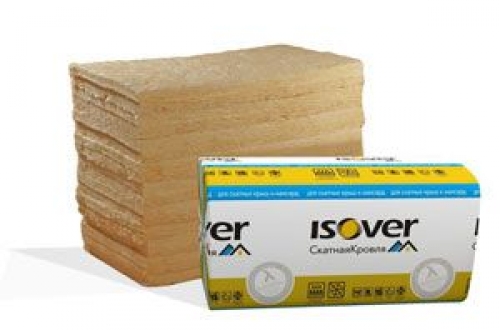
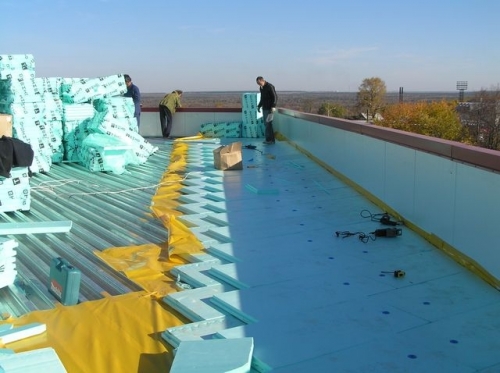

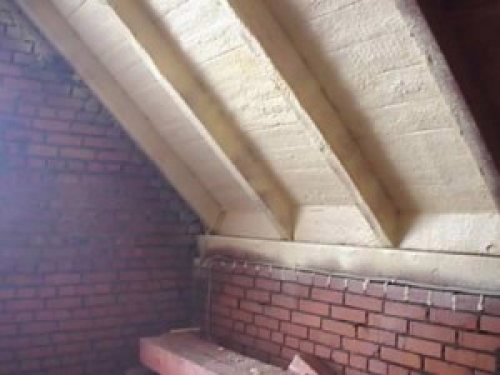
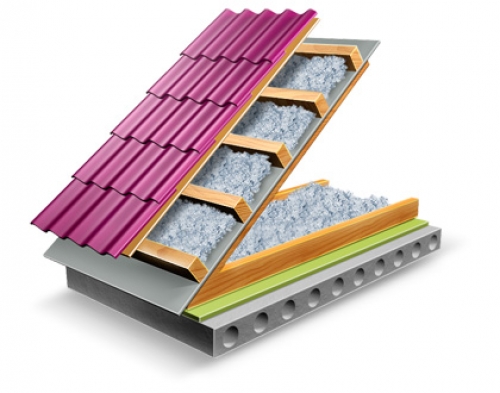
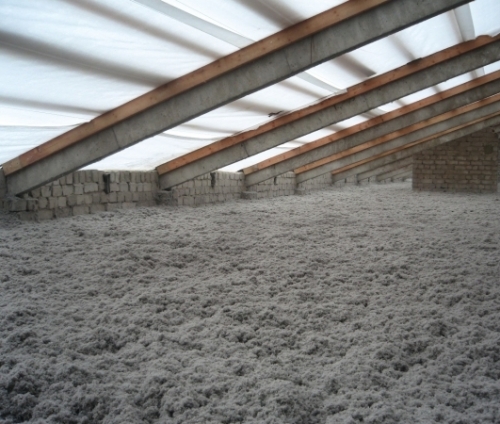
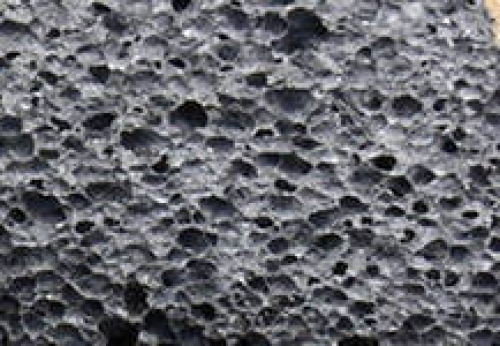
And where is so true where
And where does such true information come from that mineral wool does not absorb moisture at all?
before choosing the material,
before choosing the material, you need to pay attention to the service life, how durable it is and how long it will last, check the density of the material, the insulation should not be very heavy and very light. See what is the minimum temperature that the insulation transfers so that with severe frosts it is not damaged. If you plan to make a pitched roof, you still need to pay attention to sound insulation.